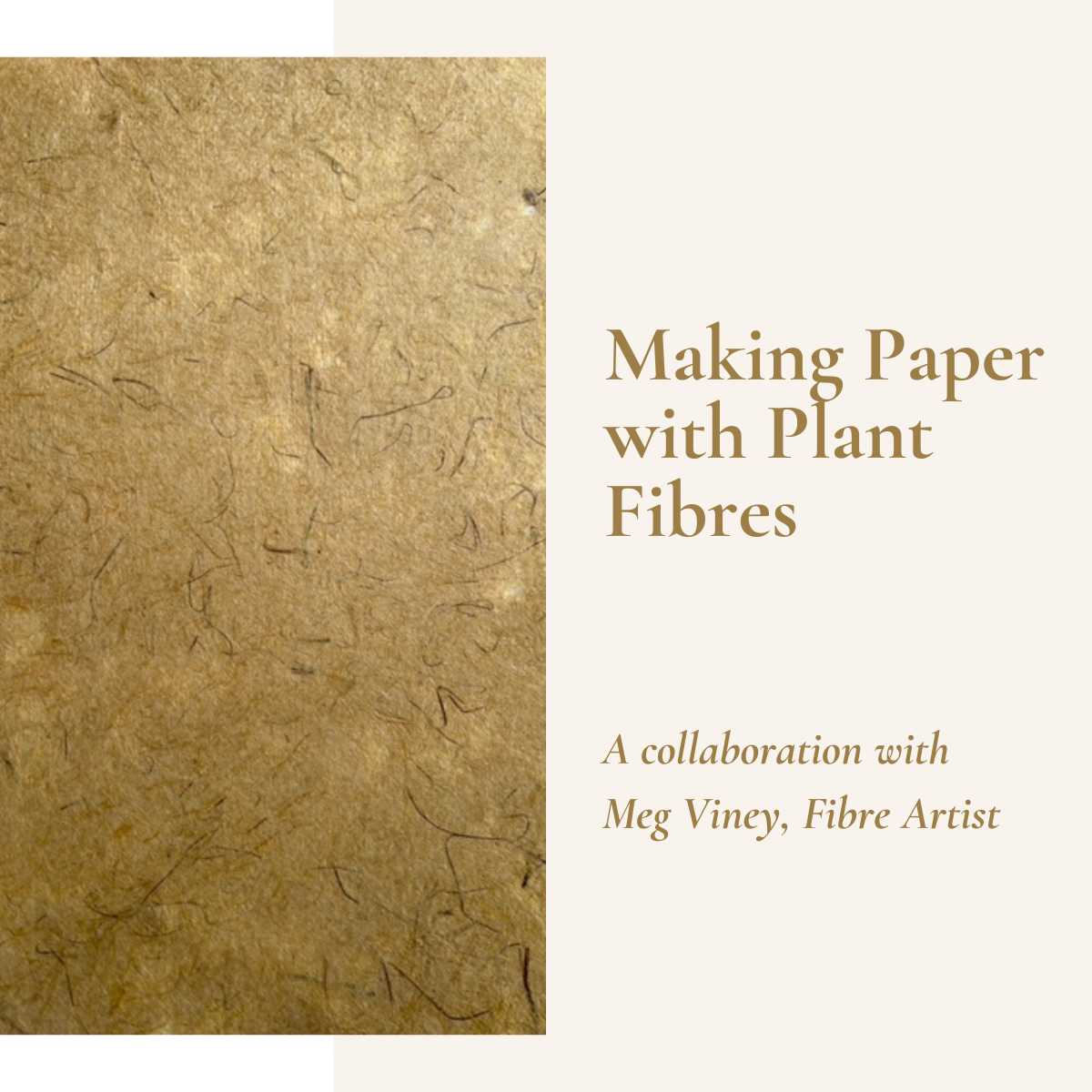Offer
Provide additional details about the offer you're running.
This store requires javascript to be enabled for some features to work correctly.

Meg Viney is a fibre artist with a deep love of nature and the environment.
Meg quotes "My practice involves a relationship with Nature’s momentum – I find something wonderful in gathering her cast-offs, and, through a number of simple processes, transforming them. The cast-offs that would otherwise decompose are recycled to become new materials, which have a life of their own – thus the beauty inherent in the plant fibre and subtly concealed by the living plant is revealed as new form".
In recent years Meg has developed an increasing interest in plant fibres and their potential to make paper.
Meg has very kindly shared her experience with using raffia as a medium for making paper. References to other plant fibres are also included and we encourage you to experiment!
You can find out more about Meg and her fabulous collection of fibre art on her website, megviney.com.
Raffia is a natural fibre harvested from the leaves of the raffia palm, which is commonly found in Madagascar and parts of Africa. Known for its strength and flexibility, raffia is often used in crafts like weaving, basket-making, and even fashion accessories. Its long, soft fibres make it an ideal material for a wide range of creative projects.
When it comes to paper making, raffia offers a unique texture and durability that sets it apart from traditional pulp-based papers. Its natural, rustic quality gives the finished paper an organic look, perfect for art, gift wrapping, or handmade stationery. Plus, raffia is an eco-friendly, biodegradable material, which makes it a sustainable option for artists and crafters who are conscious of their environmental impact.
Whether you're new to paper making or an experienced crafter, using raffia adds a creative twist to traditional techniques, allowing you to experiment with texture and fibre content in ways you may not have imagined.
At its core, paper is a thin, flexible material made from plant fibres, usually wood, cotton, or recycled paper products. These fibres are broken down, mixed with water to create a pulp, and then spread into thin sheets, which are dried and pressed into the final paper product. Paper has been used for thousands of years for writing, printing, and art, and today, it's made in countless ways—from mass-produced sheets to handmade artisanal varieties.
Raffia or foraged plant fibres are all great materials to experiment with as part of your paper making journey.
Any natural material composed of cellulose and able to be reduced to a pulp can be used: the leaves of banana plant, bamboo, red hot poker, cumbungi (river reed/papyrus), Pennisetum grass, flax, hollyhock, artichoke, hibiscus, corn (also the husks).
You can also use the green unusable part of leeks and the peels and cores of quinces (for fabulously textured paper) and all the bulbs (wait until they have browned off and then harvest).
Here are our recommended Tools:

Chop the fibres in short lengths – very tough fibres (flax and artichoke) about 4 cm long. 6cm length for other fibres. The smaller the pieces the easier they will cook.
B. Creating the Pulp
There is so much more to know about making paper. For more information about paper making or it's fascinating history, check out your local library or a bookseller.
Sincere thanks to Meg Viney for providing her expertise for this guide. Be inspired by more of Meg's fabulous work at megviney.com. If you have specific questions re the process Meg welcomes you to contact her via email vineymeg10@gmail.com.
We hope this inspires you to get out there, forage some lovely plant fibres and start experimenting with making your own beautiful paper full of texture and natural colour x